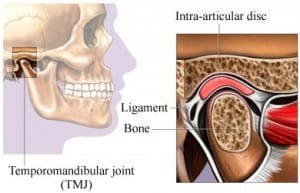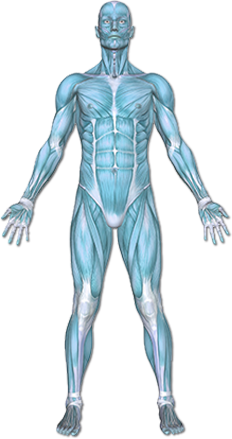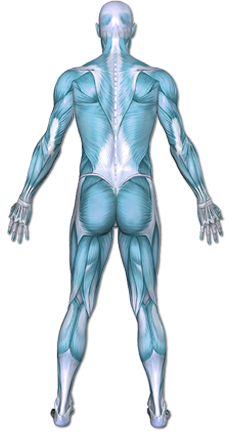Temporomandibular disorder (TMD)
Temporomandibular disorder (TMD)
is a painful condition in the joint that opens and closes the mouth. These temporomandibular joints are the small joints in front of each ear. They attach the lower jaw (mandible) to the skull. The disorder may affect the jaw joint or the muscles surrounding it. The disorder can include:
Damage to the joint surface or intra-articular disk
Displacement or complete dislocation of jaw bones


Copyright © Nucleus Medical Media, Inc.
This content was created using EBSCO’s Health Library
The exact cause of TMD is often unclear. Possible causes include:
- Injury of the jaw or face
- Excess tension in the jaw muscles
- Faulty alignment between the upper and lower teeth
- Disturbed movement of the jaw joint
- Displacement or abnormal position of the jaw joint or cartilage disc inside the jaw joint
- Arthritis or similar inflammatory process in the joint
- Excess or limited motion of the joint
This content was created using EBSCO’s Health Library
TMD is more common in women aged 30-50 years old. Other factors that increase your chance of TMD include:
- Clenching or grinding of teeth
- Poorly fitting dentures or crowns
- Fibromyalgia
- Stress
- Arthritis
This content was created using EBSCO’s Health Library
Symptoms may include:
- Pain in the temporomandibular joint, jaw, or face
- Pain may be worse with chewing, yawning, or opening the mouth
- Clicking, popping, or grating sounds with movement of the jaw
- A sensation of the jaw catching or locking briefly, while attempting to open or close the mouth, or while chewing
- Difficulty opening the mouth completely
- A bite that feels off, uncomfortable, or as though it is frequently changing
- Headache
- Earache
- Neck pain
This content was created using EBSCO’s Health Library
The doctor will ask about your symptoms and medical history. A physical exam will be done. The physical exam may include:
- Tests for range of motion of the jaw
- Listening for sounds of popping or clicking in the temporomandibular joints
- Visual inspection of your teeth, temporomandibular joints, and muscles of your face and head
- Palpation of the joints and the muscles of the face and head
Tests may include:
- X-rays
- Arthrography—jaw movements videotaped with x-rays taken after dye is injected into the joint
- MRI
- CT scan
This content was created using EBSCO’s Health Library
The goal of Physical Therapy treatment for Temporomandibular Dysfunction (TMD) is to provide pain relief using a variety of techniques to improve your range of motion through exercise and manual therapy and to improve posture and muscle imbalance. There may be modifications to your activities or work station that would be helpful as well. YOUR TREATMENT WILL INCLUDE, BUT IS NOT LIMITED TO:
- A comprehensive evaluation of head, neck, and jaw
- Education regarding the diagnosis and related head, neck, and jaw dysfunction. This includes addressing any of your questions or concerns.
- Individualized program specific to your needs including modalities, joint mobilization techniques, soft tissue mobilization, postural education, neuromuscular reeducation and TMD management techniques.
- Collaboration between referring physician to ensure comprehensive and integrated care.
This content was created using EBSCO’s Health Library
There are no current guidelines to prevent TMD.
This content was created using EBSCO’s Health Library
This content was created using EBSCO’s Health Library
RESOURCES:
- American Dental Association
http://www.ada.org
- The TMJ Association
http://www.tmj.org
CANADIAN RESOURCES:
- Canadian Dental Association
http://www.cda-adc.ca
- Canadian Society of Otolaryngology—Head & Neck Surgery
http://www.entcanada.org
REFERENCES:
- Borodic GE, Acquadro MA. The use of botulinum toxin for the treatment of chronic facial pain. J Pain. 2002;3(1):21-27.
- Haley DP, Schiffman EL, et al. The relationship between clinical and MRI findings in patients with unilateral temporomandibular joint pain. J Am Dent Assoc. 2001;132(4):476-481.
- National Institute of Dental and Craniofacial Research website. Available at: http://www.nidcr.nih.gov/oralhealth/topics/tmj Updated March 21, 2013. Accessed July 12, 2013.
- Temporomandibular joint (TMJ) dysfunction . EBSCO DynaMed website. Available at: http://www.ebscohost.com/dynamed/what.php Updated May 31, 2013. Accessed July 12, 2013.
- DynaMed’s Systematic Literature Surveillance http://www.ebscohost.com/dynamed/what.php: Turner JA, Mancl L, Aaron LA. Short- and long-term efficacy of brief cognitive-behavioral therapy for patients with chronic temporomandibular disorder pain: a randomized, controlled trial Pain. 2006;121(3):171-172.
- Post RE, Dickerson LM. Dizziness: a diagnostic approach. Am Fam Physician. 2010;82(4):369.
This content was created using EBSCO’s Health Library


